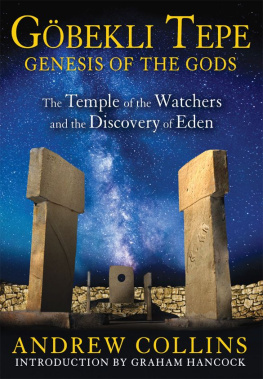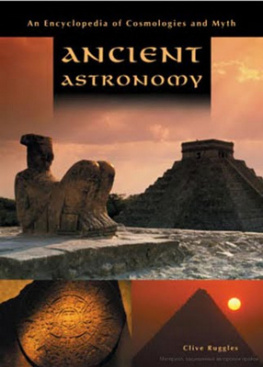Scranton - Point of origin : Gobekli Tepe and the spiritual matrix for the worlds cosmologies
Here you can read online Scranton - Point of origin : Gobekli Tepe and the spiritual matrix for the worlds cosmologies full text of the book (entire story) in english for free. Download pdf and epub, get meaning, cover and reviews about this ebook. City: Göbekli Tepe (Turkey), Array, Turkey--Göbekli Tepe, year: 2015, publisher: Inner Traditions / Bear & Company, genre: Science fiction. Description of the work, (preface) as well as reviews are available. Best literature library LitArk.com created for fans of good reading and offers a wide selection of genres:
Romance novel
Science fiction
Adventure
Detective
Science
History
Home and family
Prose
Art
Politics
Computer
Non-fiction
Religion
Business
Children
Humor
Choose a favorite category and find really read worthwhile books. Enjoy immersion in the world of imagination, feel the emotions of the characters or learn something new for yourself, make an fascinating discovery.

- Book:Point of origin : Gobekli Tepe and the spiritual matrix for the worlds cosmologies
- Author:
- Publisher:Inner Traditions / Bear & Company
- Genre:
- Year:2015
- City:Göbekli Tepe (Turkey), Array, Turkey--Göbekli Tepe
- Rating:4 / 5
- Favourites:Add to favourites
- Your mark:
Point of origin : Gobekli Tepe and the spiritual matrix for the worlds cosmologies: summary, description and annotation
We offer to read an annotation, description, summary or preface (depends on what the author of the book "Point of origin : Gobekli Tepe and the spiritual matrix for the worlds cosmologies" wrote himself). If you haven't found the necessary information about the book — write in the comments, we will try to find it.
Details how symbolic elements at Gobekli Tepe link a pre-Vedic cult in India to cosmological myths and traditions in Africa, Egypt, Tibet, and China
Discusses how carved animal images at Gobekli Tepe relate to stages of creation and provide an archaic foundation for symbolic written language
Defines how classical elements of ancient Egyptian myth and religion characterize an archaic cosmological tradition that links ancestrally back to Gobekli Tepe
How could multiple ancient cultures, spanning both years and geography, have strikingly similar creation myths and cosmologies? Why do the Dogon of Africa and the civilizations of ancient Egypt, India, Tibet, and China share sacred words and symbols? Revealing the existence of a long-forgotten primal culture and the worlds first center of higher learning, Laird Scranton shows how the sophisticated complex at Gobekli Tepe in Turkey is the definitive point of origin from which all the great civilizations of the past inherited their cosmology, esoteric teachings, and civilizing skills, such as agriculture, metallurgy, and stone masonry, fully developed.
Scranton explains how the carved images on Gobekli Tepes stone pillars were the precursors to the sacred symbols of the Dogon, Egyptians, Tibetans, and Chinese as well as the matriarchal Sakti cult of ancient Iran and India. He identifies Gobekli Tepe as a remote mountain sanctuary of higher knowledge alluded to in Sakti myth, named like an important temple in Egypt, and defined in ancient Buddhist tradition as Vulture Peak. Scranton reveals how Gobekli Tepes enigmatic H carvings and animal symbolism, symbolic of stages of creation, was presented as a kind of prototype of written language accessible to the hunter-gathers who inhabited the region. He shows how the myths and deities of many ancient cultures are connected linguistically, extending even to the name of Gobekli Tepe and the Egyptian concept of Zep Tepi, the mythical age of the First Time.
Identifying Gobekli Tepe not only as the first university but also as the first temple, perhaps built as a civilizing exercise, Scranton definitively places this enigmatic archaeological site at the point of origin of civilization, religion, and ancient science
Scranton: author's other books
Who wrote Point of origin : Gobekli Tepe and the spiritual matrix for the worlds cosmologies? Find out the surname, the name of the author of the book and a list of all author's works by series.



